As you may have noticed, chicken breeds come in various colors. To some people, the color matters, and to others, it doesn’t.
If you are one who fancies the colors and patterns unique to chicken features, you might be interested to learn that there are actually blue chicken breeds.
In fact, we’ll be taking a closer look at 6 chicken breeds that have blue plumage.
Blue chicken breeds are peculiar because of the color of their plumage and the genetics behind it.
Chicken’s can have blue feathers from breeding when a copy of the black gene is combined with a copy of the splash gene.
In other words, a chicken will have blue plumage if it has a black gene and a splash gene in its genotype.
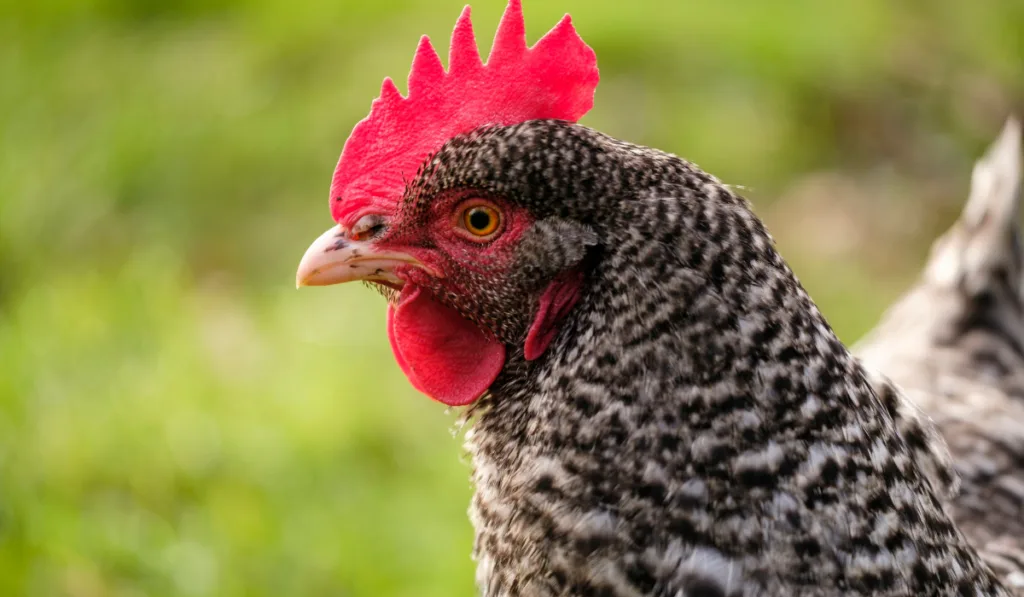
Another peculiar feature of blue chicken feathers is that they do not breed true.
In other words, when a blue chicken breeds another blue chicken, the resulting offspring may consist of blue, black, and splash chickens.
To get only blue chickens as offspring, you have to breed a black chicken with a splash chicken.
Table of Contents
Blue Andalusian
The Andalusian chicken, also known as Blue Andalusian, has its origins in Spain.
While its actual ancestry is not known, it is thought that it was produced from crossing Black Castilians with other local Castilian chicken breeds.
The Blue Andalusian has a slender body and beautiful plumage. It is a decent egg layer with an average of 3 eggs per week. If you own a Blue Andalusian, you can expect about 150 eggs in a year.
One good thing about Blue Andalusians is they lay through the winter, too. Despite this, they do not tolerate cold temperatures because of their Mediterranean origins.
Additionally, the rooster’s large combs leave them at higher risk of frostbite. Besides their inability to withstand cold, Blue Andalusians rarely have unusual health issues.
Blue Andalusians are heat tolerant. However, you should provide shade for them to reduce their susceptibility to heatstroke during severely hot weather.
If you do not want the Blue Andalusian for its eggs or meat, you may also get them for exhibition purposes. However, you may not want to consider keeping them as pets.
While they are friendly and curious, Blue Andalusians are not docile and do not like being picked up. They also do not do well in confinement and can become noisy, frightful, and flighty if cooped up.
The Blue Andalusian is recognized by the American Poultry Association (APA). It was accepted in 1874 and listed under the Mediterranean Breed class.
One strange thing about the APA’s recognition of the Blue Andalusian is that the black, white, and splash varieties are not recognized. This is odd because the Blue Andalusian would not exist without these varieties.
Blue Cochin
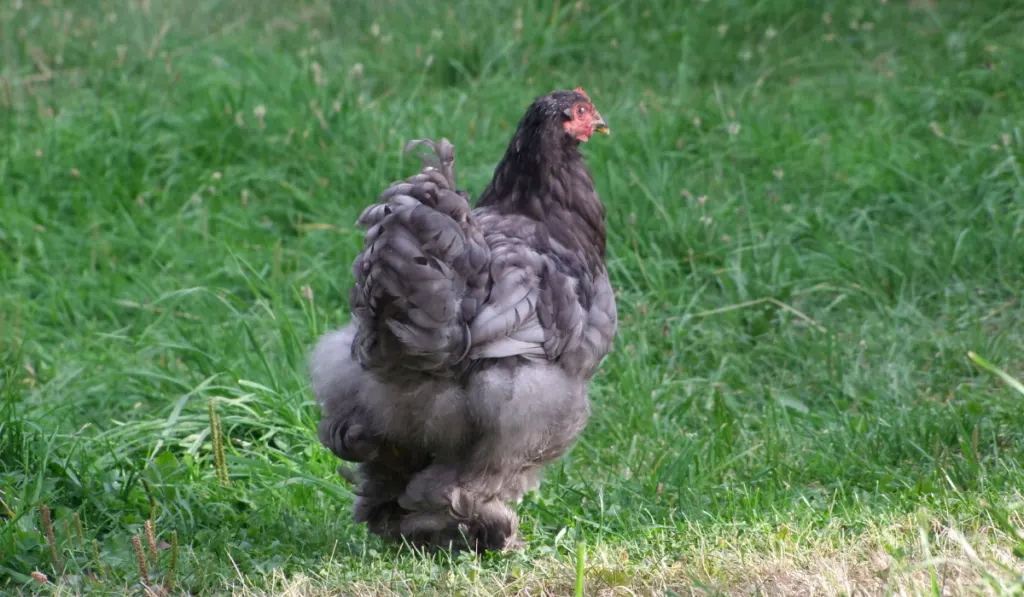
Cochins have their origins in Asia, and they were first noticed around the 1800s. They were formerly known as Cochinchina, the name of a former French colony from which they were imported in 1843.
Cochins come in various colors including blue, black, and buff. Blue Cochins are a bit different from their ancestors.
While ancestral Cochins look a lot like Jungle Fowls, the Blue Cochins (and other recent varieties) are more beautiful. Also, Blue Cochins do not lay as many eggs as their ancestors.
On average, Blue Cochins will produce 100-150 eggs within a year.
Their eggs are brown and large, and the hens are very broody.
Blue Cochins are quite large; on average, they weigh 8-11 pounds. They have full feathers that extend beyond their bodies to their feet and toes.
Blue Cochins do not like foraging, so ensure you keep them confined.
Around the 1850s, an excitement for chickens swept across the UK and the USA. This excitement was incited by 2 chicken breeds: Cochins and Brahma.
Since then, Cochins have gone on to function as a dual-purpose breed and as pet chickens. Their use as pets is possible because Blue Cochins are very friendly and docile.
You may also check this link for more information about Blue Cochin – https://thehipchick.com/grey-chicken-breeds/#Blue_Cochin
Blue Bresse Gauloise
Bresse chickens have their origins in Bresse, a region in France. There are 4 recognized colors for this breed: white, blue, black, and grey.
The Blue Bresse Gauloise is from the Bresse family, which is perhaps the tastiest chicken in the world.
The White Bresse was raised in Bresse, France and is highly prized by the French.
The name Bresse is reserved for it, and the French government strictly controls the breeding and selling of Bresse chickens.
Any Bresse raised outside of Bresse, France is called Bresse Gauloise instead. The Blue Bresse is a Bresse Gauloise. It is the newest member of the Bresse Gauloise family, and like other members, it is a dual-purpose breed.
Blue Bresse roosters have an average weight of 5.5-6.6 pounds while the hens weigh about 4.4-5.5 pounds.
Under the right conditions, they can lay as many as 250 large brown eggs in a year. However, they are not very broody.
Blue Plymouth Rock
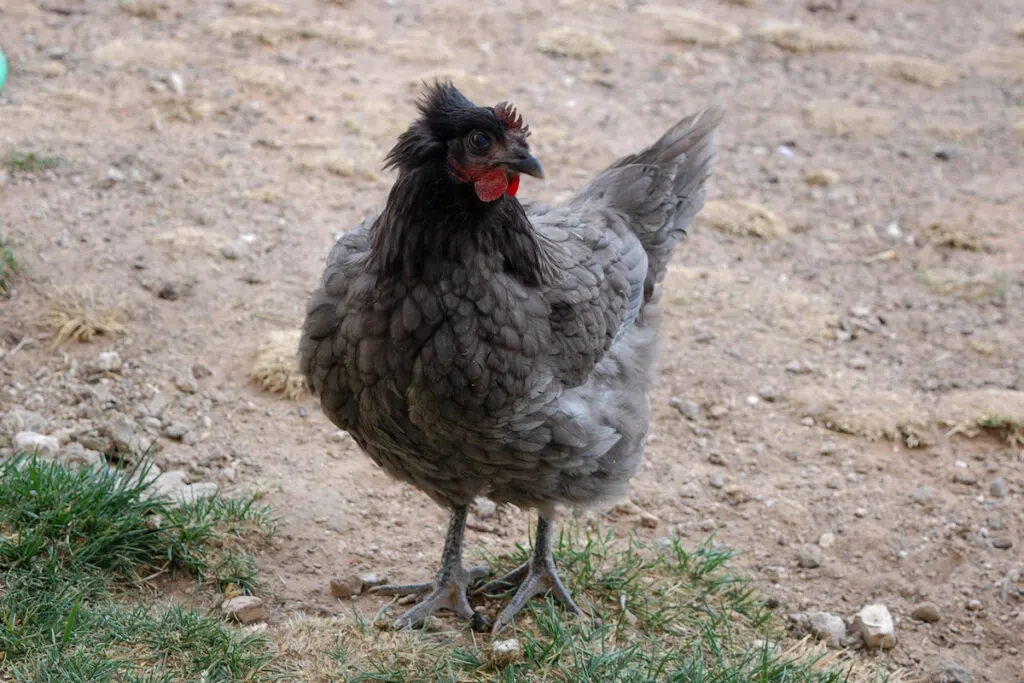
The Plymouth Rock breed was created in the USA in the mid-19th century. It came from crossbreeding a female Plymouth Barred Rock with a male native Andalusian.
The Blue Plymouth Rock is one of the few blue breeds on this list recognized by the APA. This breed is revered for its superior egg-laying ability.
You can get about 300 large brown eggs from a Blue Plymouth hen in a year. Adverse weather, such as cold weather, does not hinder their egg production.
Besides being used for its egg-laying prowess, Blue Plymouth chickens do well when used as meat.
Blue Plymouth Rocks can also function well as a pet. They are curious, calm, and docile.
Also, if you spend enough time with them, they will become familiar with you and relate better.
You can also get Blue Plymouth Rocks in bantam. The standard roosters stand around 9.5 pounds while the hens weigh 7.5 pounds. The bantam hens average 2.5 pounds while the average roosters weigh 3 pounds.
Blue Plymouth Rocks typically mature within 20 weeks, and you can expect the hens to begin egg production at about the same period. They live for about 12 years, and some may even live for up to 20 years.
Blue Wyandotte
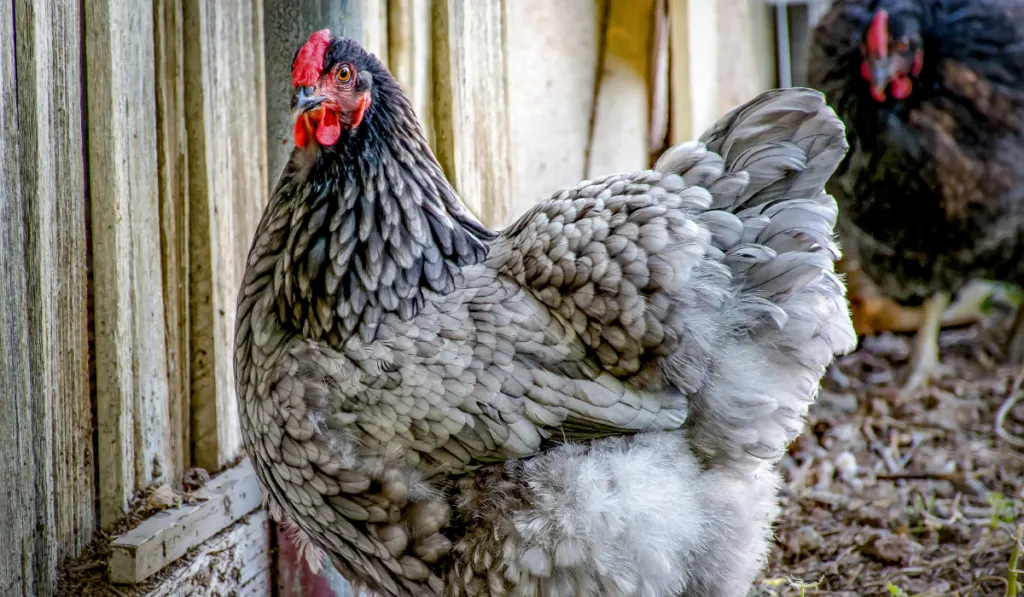
Wyandottes have been around since the 1880s and were bred from Spangled Hamburgs and Dark Brahma chickens. They got their name from a tribe called Wendat (now Wyandotte).
The Blue Wyandotte is of the most recent members of the Wyandotte family, and it was created in the United States.
Blue Wyandottes are rare, and they are in high demand. However, the color is not recognized by the APA.
They do well as a dual-purpose breed, laying an average of 200 large brown eggs per year and producing great meat.
Blue Wyandotte hens, like the other varieties, are very broody. Hence, they make excellent mothers.
Blue Wyandotte Chickens are large, with the hens averaging 6.5 pounds and the roosters weighing 8.5 pounds.
Blue Wyandottes are friendly, peaceful, and relatively quiet. You may pick them up and cuddle them, but they would not like to be in close contact with you for long.
They do not interact well with non-Wyandotte breeds, and they are usually not aggressive. But when another chicken tries to intimidate them, they will react.
Blue Australorp
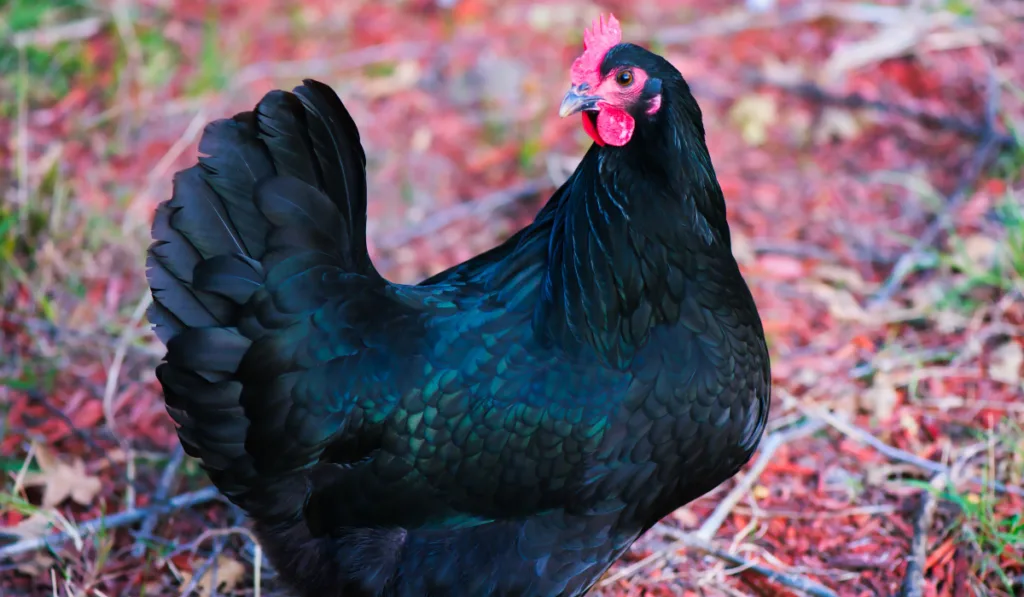
The Blue Australorp is from the Australorp lineage which in turn has its roots in the famed Orpington breed.
The name Australorp was formed from combining the terms Australia and Orpington. Australorps were bred from Orpingtons imported into Australia.
The imported Orpingtons were crossbred with Langshan, White Leghorn, Minorca, and Rhode Island Reds. The aim of the crossing was to get a breed that would produce more eggs.
Blue Australorps are uncommon, and like the other various colors of the Australorp breed, they are very productive. You can expect about 250 large brown eggs in a year from a Blue Australorp hen.
In the past, Australorps used to lay eggs in 300s, with a record high of 364 eggs in 365 days.
Blue Australorps love foraging. But if you keep them confined, they would tolerate it. However, you may need to let them out once in a while, or you risk helping them become obese.
Although the American Poultry Association does not recognize the Blue Australorp, the Australian Poultry Association recognizes the breed.
Blue Australorps are dual-purpose chickens, but they may also be used as pets since they are gentle. Blue Australorps are available in 2 sizes: standard and bantam.
The average standard rooster weighs 8.5-10 pounds while the hen weighs 6-8 pounds. Bantam roosters of this breed weigh 2-2.5 pounds while the hens weigh 1.5-2 pounds.
Resources
- https://meyerhatchery.zendesk.com/hc/en-us/articles/360018411672-What-does-blue-and-lavender-feather-coloring-mean-Will-I-receive-all-blue-chicks-
- https://www.mypetchicken.com/backyard-chickens/chicken-help/Will-all-of-my-blue-chicks-actually-be-blue-H284.aspx
- https://starmilling.com/poultry-chicken-breeds/
- https://poultrykeeper.com/chicken-breeds/cochin-chickens/
- https://backyardpoultry.iamcountryside.com/chickens-101/blue-and-black-australorp-chicken-a-prolific-egg-layer/
- https://www.freedomrangerhatchery.com/blue-plymouth-rock.asp
- https://www.thehappychickencoop.com/andalusian-chicken/
- https://www.bressefarms.com/about-breese-chickens.html
- https://www.thehappychickencoop.com/bresse-chicken/
- https://www.chickensandmore.com/blue-laced-red-wyandotte/#Blue_Laced_Red_Wyandotte_Overview
- https://www.strombergschickens.com/product/blue-wyandotte-chicks
